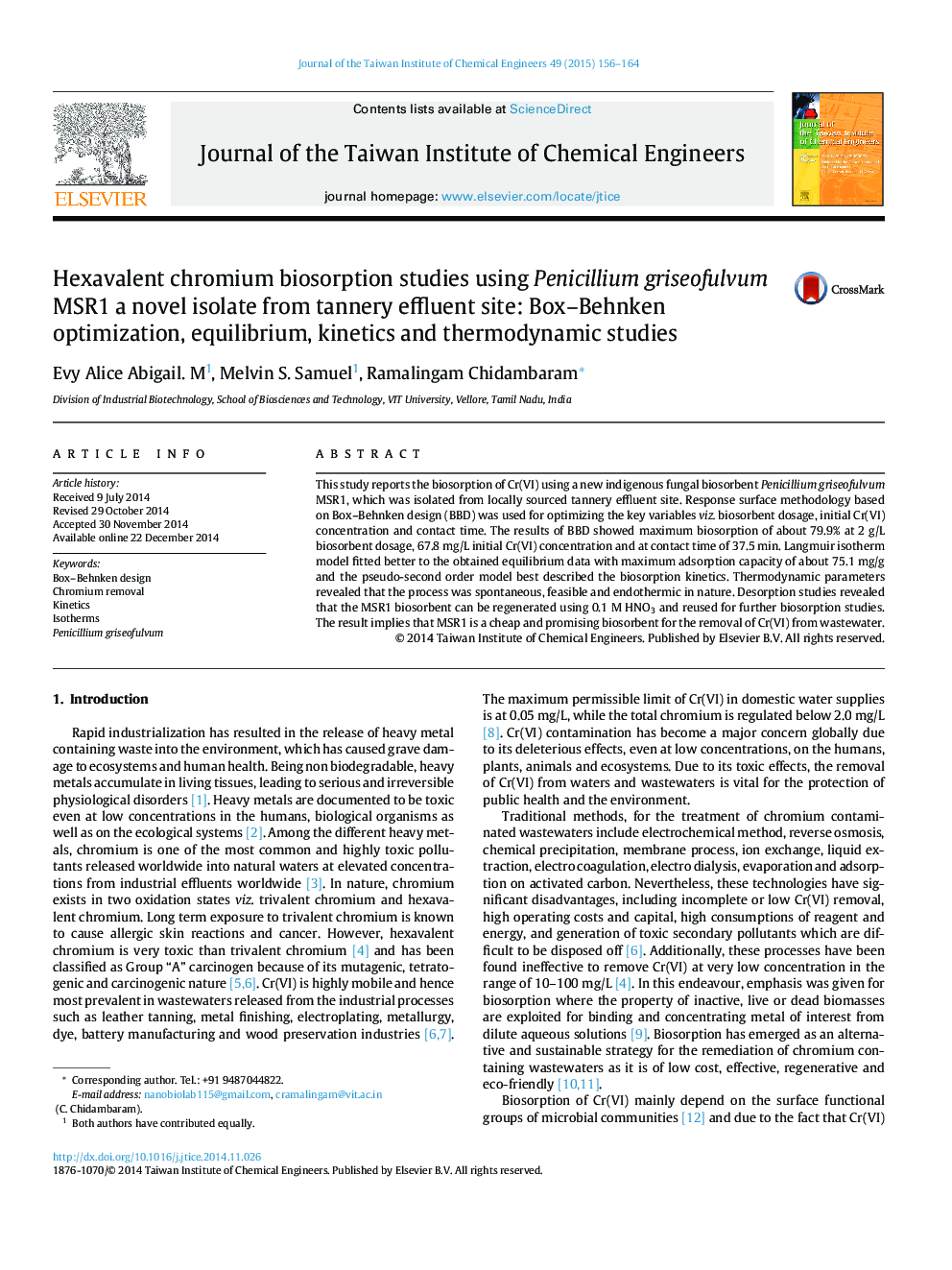| Article ID | Journal | Published Year | Pages | File Type |
|---|---|---|---|---|
| 691197 | Journal of the Taiwan Institute of Chemical Engineers | 2015 | 9 Pages |
•Cr(VI) removal potential of novel fungal native biomass was investigated.•MSR1 biomass showed highest Cr(VI) removal efficiency at optimized conditions.•Equilibrium and kinetic parameters for biosorption were studied.•Resusability potential of MSR1 biosorbents was >90%.
This study reports the biosorption of Cr(VI) using a new indigenous fungal biosorbent Penicillium griseofulvum MSR1, which was isolated from locally sourced tannery effluent site. Response surface methodology based on Box–Behnken design (BBD) was used for optimizing the key variables viz. biosorbent dosage, initial Cr(VI) concentration and contact time. The results of BBD showed maximum biosorption of about 79.9% at 2 g/L biosorbent dosage, 67.8 mg/L initial Cr(VI) concentration and at contact time of 37.5 min. Langmuir isotherm model fitted better to the obtained equilibrium data with maximum adsorption capacity of about 75.1 mg/g and the pseudo-second order model best described the biosorption kinetics. Thermodynamic parameters revealed that the process was spontaneous, feasible and endothermic in nature. Desorption studies revealed that the MSR1 biosorbent can be regenerated using 0.1 M HNO3 and reused for further biosorption studies. The result implies that MSR1 is a cheap and promising biosorbent for the removal of Cr(VI) from wastewater.
